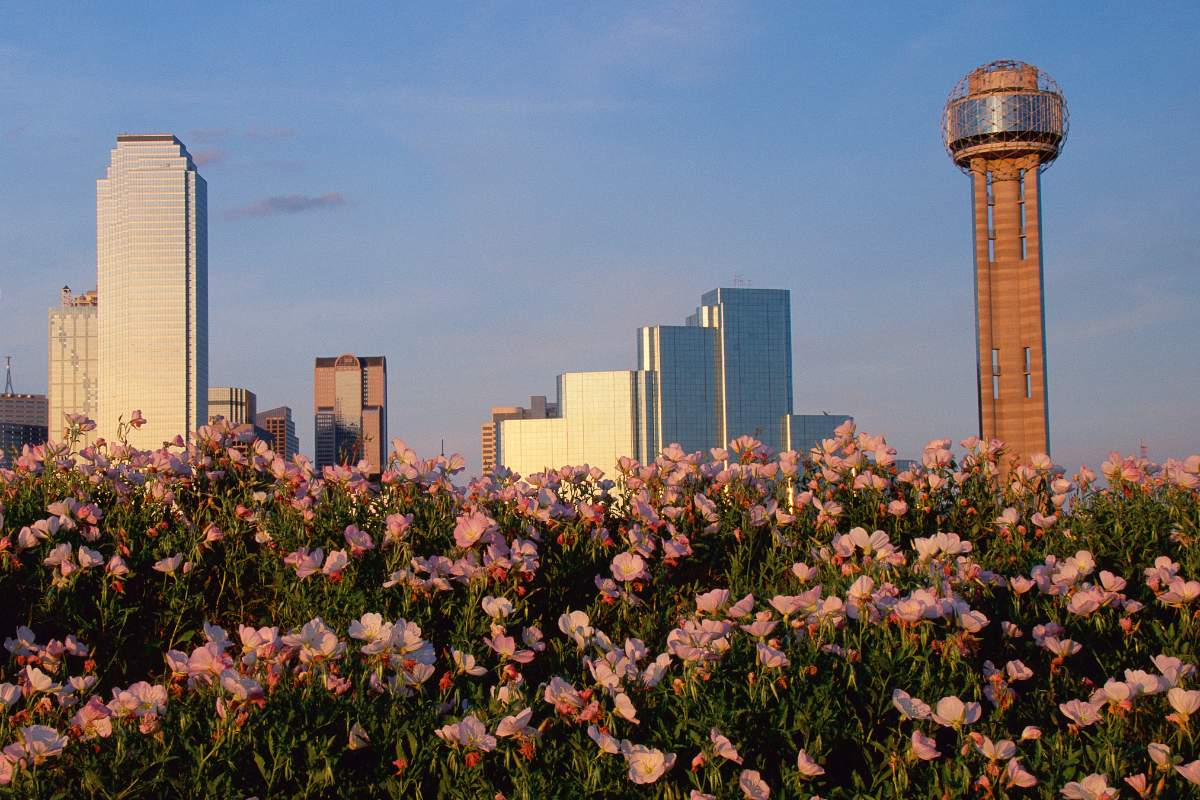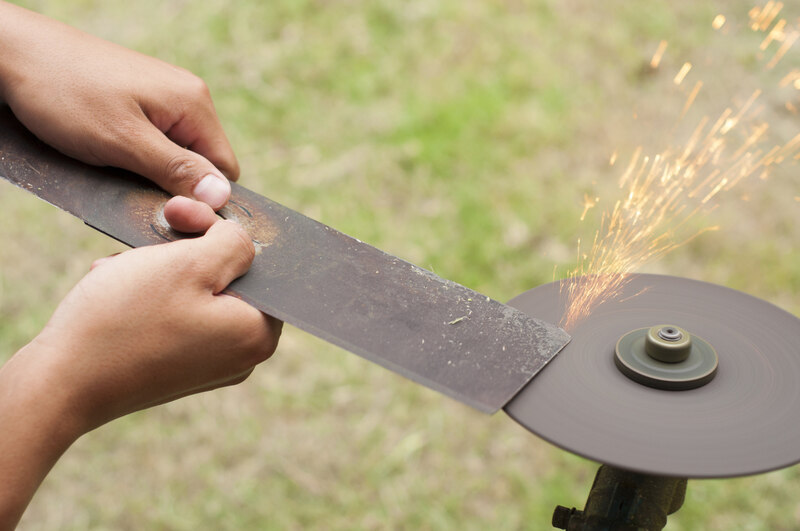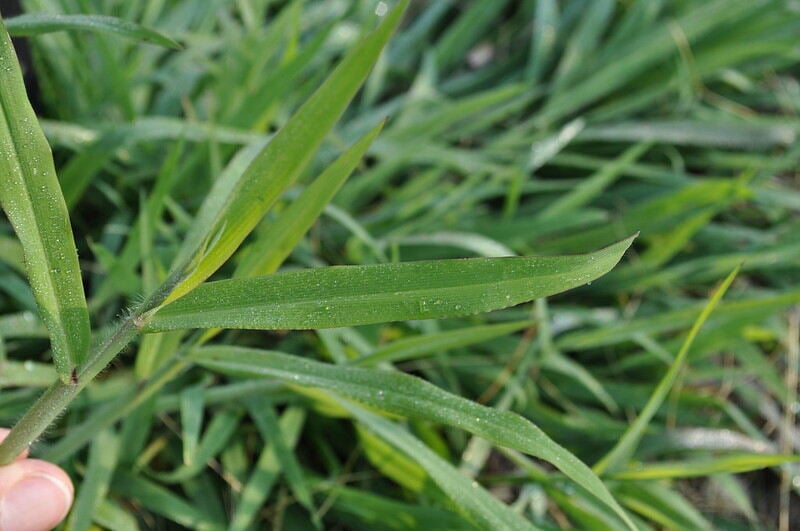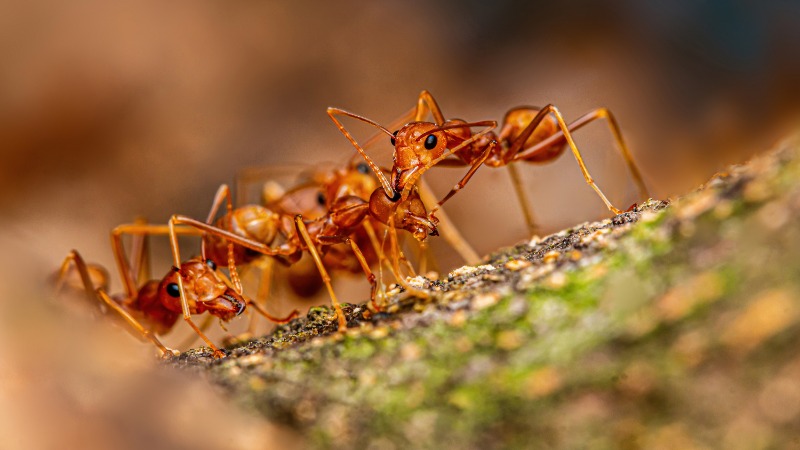
In Dallas, preparing your lawn in spring to survive the blazing Texas summer is a challenge. However, with routine lawn maintenance, you can grow a thriving lawn.
With tips from a local expert, here are the 12 spring lawn care tips for Dallas, including how to get ready for the mowing season, how much water your lawn needs to stay green, and how to prepare your soil for optimum grass growth.
1. Test and Prepare Your Soil
Homeowners should test their soil every 2 to 3 years. Spring is the growing season, so you need to ensure your soil is ready to support robust root growth.
Here’s how to do it:
- Test your soil. Ideally, you should have your soil tested in winter. If it’s already spring, get a soil test in early March before the growing season begins. Dallas yards commonly have Blackland Prairie soils, an alkaline soil high in clay. By learning your soil’s properties and nutrient levels, you will be able to determine what soil amendments you need.
- Study the results. A soil test report will inform you if your lawn is lacking nitrogen, phosphorus, or potassium. Most soils have sufficient levels of phosphorus and potassium but benefit from nitrogen fertilizer in the spring.
- Amend your soil. Add grass clippings once you start mowing or topdress the lawn with compost to add organic matter and nutrients to your soil and support plant growth.
If you provide a soil sample from your yard and pay a fee, you can have your soil tested by Texas A&M AgriLife Extension.
See Related:
- How to Use a Soil Test Kit
- How to Prepare a Soil Sample (4 Easy Steps)
- 9 Reasons Why Soil Testing is Important for the Lawn
2. Check Your Mowing Equipment

If you didn’t winterize your mower or weed eater last year, springtime is when you should take your mowing equipment out of storage for inspection and necessary preparations.
Here’s how to prep your lawn mower before the mowing season starts:
- Inspect mowing equipment. Check the mowing deck for rust or winter damage.
- Sharpen mower blades. Learn how in our guide on how to sharpen your mower blades.
- Clean your mower. Remember to clean the mowing deck.
- Install new spark plugs if you removed them for the winter. Replace the spark plugs with new ones if they are damaged or old.
- Replace or clean the air filter. Foam air filters can be cleaned with water. Paper air filters need to be cleaned or replaced.
- Check the tires to ensure they are inflated.
- Change the oil to extend mower life.
- Oil moving parts on the mower as needed.
- Add gasoline. You should have drained the gas from your mower in preparation for the winter, so it’s time to get your mowing equipment fueled up and ready to go.
- Apply a silicone spray to the underside of your lawn mower after you clean the mowing deck. This prevents grass buildup clogging your mowing deck.
If you do nothing else, make sure your blades are sharp before the season starts.
“The most important aspect of mower maintenance is sharpening the blades,” says Jay Caddel, county Extension agent for Tarrant County at Texas A&M AgriLife Extension. “Dull blades crush the grass blades rather than cutting them, which slows the recovery time for the grass. This also increases the susceptibility to disease and pests.”
“We usually suggest that a homeowner has two sets of mower blades, one to use and the other sharpened to be switched out in the future,” he says.
Pro Tip: Mower maintenance can take valuable time out of your weekend, so consider having your mower serviced by a company or small engine repair shop instead. But make your appointment early; spots fill up quickly in spring.
See Related:
- How Often Should You Sharpen Lawn Mower Blades?
- DIY Lawn Mower Maintenance Guide
- How Much Does Lawn Mower Repair Cost?
3. Inspect Your Irrigation System
During the cold winter months, freezing temperatures can cause broken lines or leaks in your pipes, so inspect your sprinkler system for winter damage before the grass starts growing.
Don’t forget to test the output rate of your sprinkler system to ensure it isn’t underwatering or overwatering your lawn. Use the catch can test to determine how long you need to run your irrigation system to water your grass 1 inch of water a week in the spring and the rest of the growing season.
4. Clean the Yard
Spring cleaning isn’t just for inside your house; it’s good for the outdoors, too. To start the spring season off on the right foot, clear your yard of debris, including:
- Branches
- Dead plants
- Leaves
- Pine needles
- Rocks
- Twigs
The best way to clear your yard is with a rake or a leaf blower.
| If you don’t want to handle the mess on your lawn, LawnStarter’s leaf removal service can remove your leaves to get your lawn ready for spring growth. |
5. Control Weeds

Most pre-emergent herbicides should be applied when the soil temperature reaches 50 to 55 F, usually between mid-February and early March, before you see weeds in your yard.
Use pre-emergents in spring to prevent these common Dallas weeds:
- Grassy weeds (such as crabgrass and dallisgrass)
- Warm-season broadleaf weeds (such as dandelions or spurge)
- Sedges (such as nutsedge)
Established weeds can be removed with post-emergent herbicides or hand-pulling. Post-emergent herbicides should be applied for weeds that have already sprouted in your yard in the spring.
| If weeds are popping up in your yard, contact a Dallas lawn treatment pro to reclaim your yard from pesky weeds. We completed nearly 40,000 lawn treatment services last year at an average price of $103 per service and received an average rating of 4.4/5 from our customers. |
See Related:
6. Water Your Grass
Once your grass begins to green and grow again, it should receive 1 inch of water a week to keep it healthy and to encourage deep root growth.
The best time to water is in the early morning hours between 6 a.m. and 10 a.m. (Starting on April 1, Dallas’s watering restrictions prohibit watering between 10 a.m. and 6 p.m.) To conserve water and prevent runoff on clay soils, use the cycle and soak method to irrigate your lawn.
Don’t irrigate when your grass is still dormant in the first weeks of spring. Wait until your grass starts actively growing. Otherwise, you risk overwatering, which can cause lawn diseases such as large patch or take-all root rot.
See Related:
7. Begin Mowing

Mow every other week once the growing season starts in March or April after your grass emerges from dormancy. After about 2 mows, start mowing weekly.
Specific start dates for the mowing season vary depending on the weather and the type of turfgrass, so the rule of thumb is to start mowing after your lawn has greened up and shows obvious growth.
| Type of Grass | Mowing Height | When to Start Mowing |
| Bermuda | 1 to 2 inches | March: Mow once every other week. April: Mow weekly. |
| Centipede | 1 to 2 inches | The primary mowing season starts in late April to May. |
| St. Augustine | 2.5 to 3 inches | March: Mow once every other week. April: Start mowing weekly, depending on the amount of rainfall. |
| Zoysia | 1 to 2.5 inches | March: Mow once every other week. Mow low for the first mow of the season. April: Mow weekly. |
Follow the one-third mowing rule: Never trim off more than a third of your grass’s total height. This prevents scalping and protects the health of your grass.
Don’t have time to mow your lawn? Hire a local Dallas lawn care pro for professional mowing services.
8. Overseed Your Lawn
Spring’s milder temperatures and frequent rainfall create good conditions for new grass to grow. Overseeding your Dallas lawn with warm-season grasses fills in bare spots and helps grass out-compete weed growth.
Overseed warm-season grasses in late spring once soil temperatures have reached 65 to 70 degrees F once your lawn has greened up.
Late spring is the best time to overseed, but the timing and method vary depending on the type of grass:
| Type of Grass | When to Overseed |
| Bermuda | March to May |
| Centipede | March |
| Zoysia | May to June |
Here are some other things you should keep in mind for overseeding certain types of grass:
- Bermudagrass: If you overseeded with ryegrass last fall, mow Bermuda lower than normal to help it outcompete the rye. Bermudagrass that wasn’t overseeded with rye may benefit from overseeding in the spring.
- St. Augustinegrass: Seed for St. Augustinegrass is unavailable to purchase, so you will need to buy sod. The best time to plant St. Augustinegrass sod is in March or April.
- Zoysiagrass: Although you can overseed Zoysiagrass in late spring, June is the best time for overseeding. Keep in mind that Zoysiagrass doesn’t require much overseeding due to its dense growth, and like St. Augustinegrass, it’s easier to fill in bare patches in Zoysiagrass with sod than seed.
If you want to install sod instead of planting seed, the best time to plant sod in Dallas is April or early May.
See Related:
9. Dethatch Your Yard

Thatch is the layer of organic matter between the soil and the base of grass blades. If the thatch layer in your yard is 1/2 to 3/4 inches thick or more, it’s time to dethatch your lawn. This helps prepare it for the summer heat by allowing better grass growth and improving temperature regulation, since thatch buildup can increase soil temperatures and stress the grass.
| Type of Grass | When to Dethatch |
| Bermuda | April or May |
| Centipede | April |
| St. Augustine | April or May |
| Zoysia | May |
St. Augustinegrass and Bermudagrass are Dallas grass types that grow well in North Texas, but they are prone to developing thatch quickly. You may need to dethatch your yard more than once a year if you have these grass types, especially if you fertilize often.
See Related:
10. Aerate Your Lawn

Aerate your lawn to alleviate compacted soil. This allows soil to access nutrients, air, and water that nurture plant growth. The best time to aerate in Dallas is between mid-April and mid-May.
Clay soil, a common soil type in Dallas, is especially prone to compaction. For a healthy yard, it’s best to aerate once or twice a year, especially if you have clay or Blackland Prairie soils.
See Related:
11. Manage Pests

Chinch bugs are most commonly found in St. Augustinegrass. They also infest Bermudagrass and Zoysiagrass. To deal effectively with this lawn pest, treat chinch bugs with insecticide as soon as you have confirmed they are the source of lawn damage. Dethatching is another good way to manage small populations and prevent chinch bugs in the future.
Fire ants begin to forage in the spring when temperatures rise, so spring is a good time to start fire ant control. The best way to treat ants is with the Texas two-step method:
- Broadcast granular fire ant bait.
- Treat individual ant mounds directly.
Keep an eye out for these other common Dallas pests that you may need to treat in the spring:
- Armyworms
- Caterpillars
- Grasshoppers
- Mosquitoes
If you’re unsure what pest you’ve got, get help identifying your pests at the Dallas County and surrounding area Extension offices.
Lawn pests can be difficult to treat on your own. You can rely on LawnStarter’s lawn treatment services to manage your pest problem for you.
See Related:
- 11 Summer Lawn Pests and How to Get Rid of Them
- How to Get Rid of Armyworms on the Lawn
- How to Get Rid of Mosquitoes in Your Yard
- How to Get Rid of Grasshoppers
12. Fertilize Your Lawn
The recommended date for a nitrogen application in Dallas is May 1, preferably when local temperatures consistently reach 80 F.
Fertilizer for Dallas warm-season lawns should be applied about 3 weeks after the grass turns green. You should have mowed your lawn 2 or 3 times before you fertilize.
Nitrogen bolsters the health of your grass and prepares it for the summer months. Apply 1 or 2 nitrogen applications during the spring growing season, and make sure to space applications apart by 4-8 weeks. Apply only 0.5 to 1 pound of nitrogen fertilizer per 1,000 square feet at a time.
Do not fertilize centipedegrass with nitrogen in the spring. Centipedegrass typically needs iron supplements, so if it looks yellow, fertilize it with iron instead.
See Related:
- Why Add Iron Fertilizer to Your Lawn?
- When to Fertilize Lawns in Texas
- How to Fertilize Your Lawn
- 6 Different Nitrogen Sources for the Lawn
Make Lawn Care Easy: Hire a Dallas Lawn Care Pro

Start your Dallas lawn off on the right foot this growing season with timely mowing, watering, fertilizing, and other good lawn care practices.
That takes time – which you may not have. If you are tired of caring for your warm-season grass, our Dallas-area lawn care pros can handle all your mowing and lawn care chores, from leaf removal to lawn fertilization.
LawnStarter’s Dallas lawn care services are also available in the DFW area, including cities such as Irving, Arlington, Richardson, and Plano. With our app, booking LawnStarter’s lawn care and landscaping services is only a few taps away.
Read Next:
- How to Ensure Your Dallas Lawn Survives the Summer Heat
- Guide to Fall Lawn Care in Dallas
- Winter Lawn Care Guide for Dallas, TX
Sources:
- “Bermudagrass Home Lawn Management Calendar.” By Casey Reynolds, turfgrass Extension specialist, and Matt Elmore, turfgrass specialist. Texas A&M AgriLife Extension.
- “Don’t Let Fire Ants Ruin Your Summer, Take Steps This Spring.” By Adam Russell, Texas A&M AgriLife Communications. Texas A&M AgriLife Extension.
- “Early Spring Lawn To-Do List a Little Different This Year.” By Adam Russell, Texas A&M AgriLife Communications. AgriLife Today.
Jay Caddel, county Extension agent at Texas A&M AgriLife Extension, Fort Worth, TX. Personal interview. - “Lawn-Fertilization-for-Texas-Warm-Season-Grasses.” By David R. Chalmers, Extension turfgrass specialist, and James A. McAfee, Extension turfgrass specialist. Texas A&M AgriLife Extension.
- “The Need to Overseed.” By Chrissie A. Segars, turfgrass specialist. Texas A&M AgriLife Extension.
- “Timing is Important for Soil Tests in Agriculture.” By Shelby Shank, field editor. Texas Farm Bureau.
Main Image: Dallas skyline with Reunion Tower during spring. Image Credit: spiritofamerica / Adobe Stock